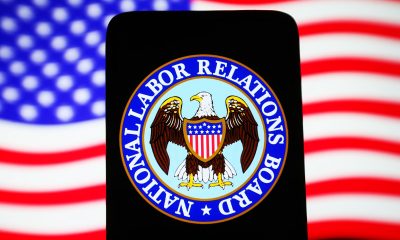Investing
PBOC’s Bold Move: RRR Cut to Inject $139 Billion in Liquidity

© Reuters. PBOC’s Bold Move: RRR Cut to Inject $139 Billion in Liquidity
Quiver Quantitative – In response to economic challenges and a significant stock market decline, China has announced a strategic reduction in its reserve requirement ratio (RRR) for banks. Set for implementation on February 5, this move aims to inject 1 trillion yuan ($139 billion) of long-term liquidity into the market. This proactive step, unusually announced in advance by the People’s Bank of China (PBOC), is part of broader measures to stabilize the economy and financial markets. These efforts include enhanced support for the property sector and deepening financial collaboration with Hong Kong.
In the backdrop of a post-pandemic landscape, this decision by the PBOC Governor Pan Gongsheng reflects an urgency to address economic instability and market concerns. The RRR cut is expected to ease liquidity ahead of the Lunar New Year, although its broader economic impact remains uncertain. Analysts and investors are closely monitoring these developments, with a keen eye on potential future policies that might address more structural economic issues.
Market Overview:
-Chinese markets (CNY, HSI) surge on surprise RRR cut announcement, hinting at broader stimulus measures to combat economic woes and a $6 trillion stock market rout.
-PBOC Governor Pan Gongsheng signals a 0.5 percentage point RRR reduction on February 5th, injecting long-term liquidity into the market.
-Announcement raises questions about effectiveness, with limited impact expected unless paired with further policy action, particularly in the struggling property sector.
Key Points:
-China’s recent economic turmoil and stock market plunge forced the government’s hand, prompting an uncharacteristically early disclosure of policy changes.
-The announced RRR cut, coupled with additional measures aimed at developers and financial ties with Hong Kong, seeks to boost market confidence and liquidity.
-However, skepticism persists regarding the sufficiency of these steps, with calls for more proactive fiscal policies and structural reforms, especially in the property market.
Looking Ahead:
Investor focus shifts to the implementation of promised policies and their tangible impact on economic growth and market stability.
Concerns remain surrounding yuan volatility and potential divergence from the Fed’s monetary policy path, limiting room for significant easing measures.
The government’s ability to address fundamental issues beyond short-term liquidity injections will be crucial in restoring long-term confidence and navigating the challenging economic landscape.
Alongside the RRR reduction, the PBOC has indicated forthcoming interest rate cuts on relending funds, targeting the agricultural sector and small businesses. This aligns with China’s broader monetary policy adjustments, including previous RRR cuts in 2023. Amid global economic shifts and the US Federal Reserve’s changing stance on interest rates, China’s monetary policy is adapting to create more operational space and maintain a balanced credit environment.
This monetary policy adjustment is seen as a step towards economic revitalization, but experts suggest that it alone may not be sufficient. A more dynamic fiscal policy, especially one that stimulates consumption, could be pivotal in accelerating economic growth and stability in China.
This article was originally published on Quiver Quantitative
Read the full article here

-

 Personal Finance6 days ago
Personal Finance6 days agoGas prices drop as demand for driving fizzles out: AAA
-

 Investing6 days ago
Investing6 days agoCrowdstrike CEO Responds to Causing Largest IT Outage in History
-

 Side Hustles6 days ago
Side Hustles6 days agoHow to Build A Startup, From an Early Lyft, Twitch Investor
-

 Passive Income6 days ago
Passive Income6 days agoThe Top 5 AI Tools That Can Revolutionize Your Workflow and Boost Productivity
-

 Passive Income4 days ago
Passive Income4 days agoNLRB Drops Expanded Joint Employer Appeal
-

 Side Hustles6 days ago
Side Hustles6 days agoJake Paul: Mindset Hacks, Mike Tyson Fight, Embracing Fear
-

 Investing6 days ago
Investing6 days agoBoeing to supply E-7 in first major win since plea deal By Reuters
-

 Side Hustles5 days ago
Side Hustles5 days ago10 Effective Growth Marketing Strategies for Your Startup


















